Gentrification old friend:
Talking about gentrification is talking about an ancient problem that strikes the cities, even if the word gentrification appears for the first time in 1964 by the sociologist Ruth Glass, Gentrification is a process of changing the character of a neighborhood through the influx by an increase of wealthy residents and new businesses, something that is happening since ancient times. It’s linked with the economic system that most of the cities have today (Capitalism), but even if the movement of people from neighbors is something bad, this process of systemic renewal of city districts creates new opportunities and infrastructure for the future so for this analysis, we focus on the why? of this process for an under 30 citizen, taken in consideration the perimeter of Eixample – Barcelona which is one of the most important districts to develop for Real Estate and private market.
About the Income in Barcelona:
In order to understand the economical possibilities per user, we look for the data income provided by Instituto Nacional de Estadistica (INE), which shows the income divide by ages through time. The current graph shows how people +65 has the best incomes and under 30 people has not a really good one, incomes for younger people are low and it takes a long time to has a good salary, so that brings the problem of oldness emancipation which means that young adults live more time with their parents because their salaries do not allow them to be independent.
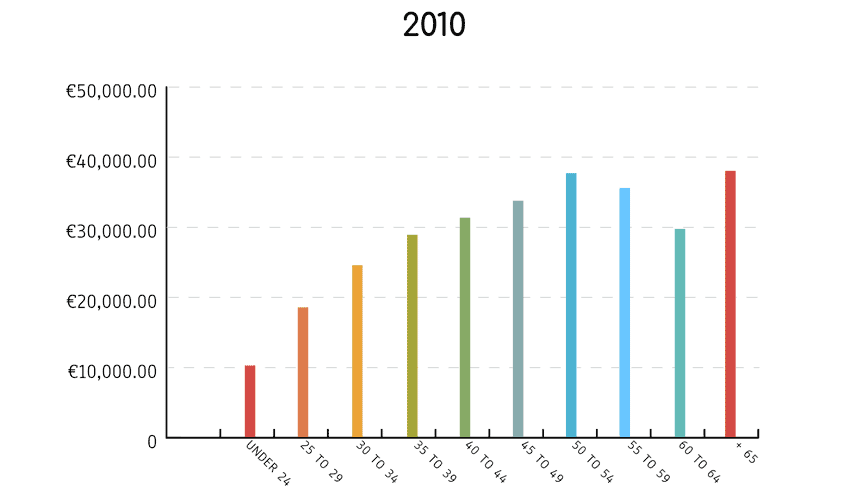
What about buying pricing?:
So if an under 30 citizen wants to buy a department in Eixample, their best option is to buy near San Antoni or Sagrada Familia where the price is cheaper in comparison with La Dreta de l’Eixample, but even in the cheapest place saving the amount of money needed, it will take several years of saving money and considering the best scenario which is not having outcomes or another thing to be paid.
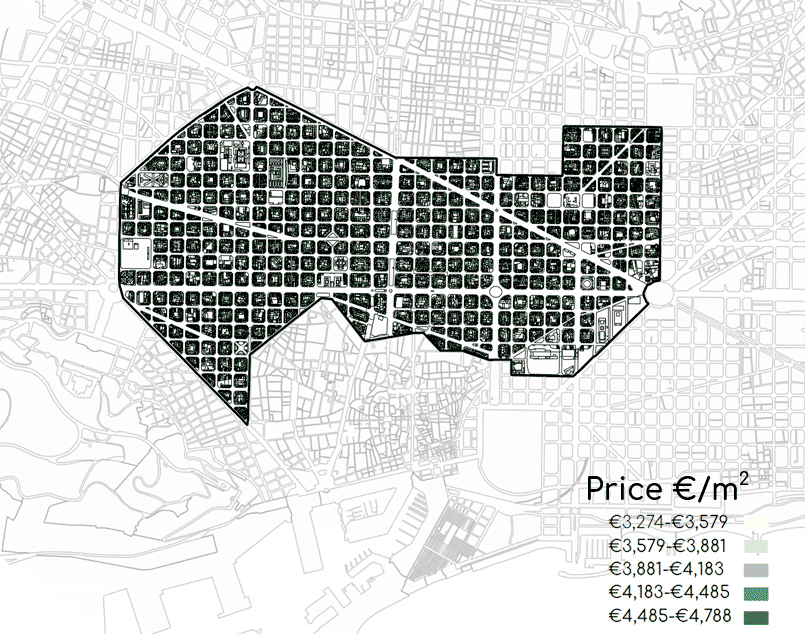
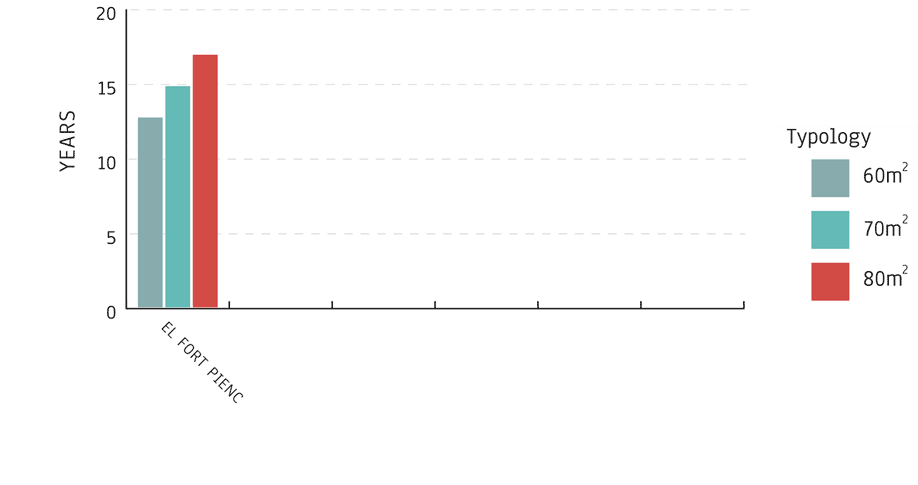
What about rent pricing?:
Rent is more accessible than buying a department, but having a payment monthly if it’s not well supported to your income can be a problem in mid-long time that will be noticed when savings are not so high that people were expecting, Even the cheaper rents in Eixample, case of San Antoni and Sagrada Familia, are high for an income of an under 30 citizen, so as a result, they have to move to a mother district o barrio that can fits with the expenses according to their necessities and incomes.
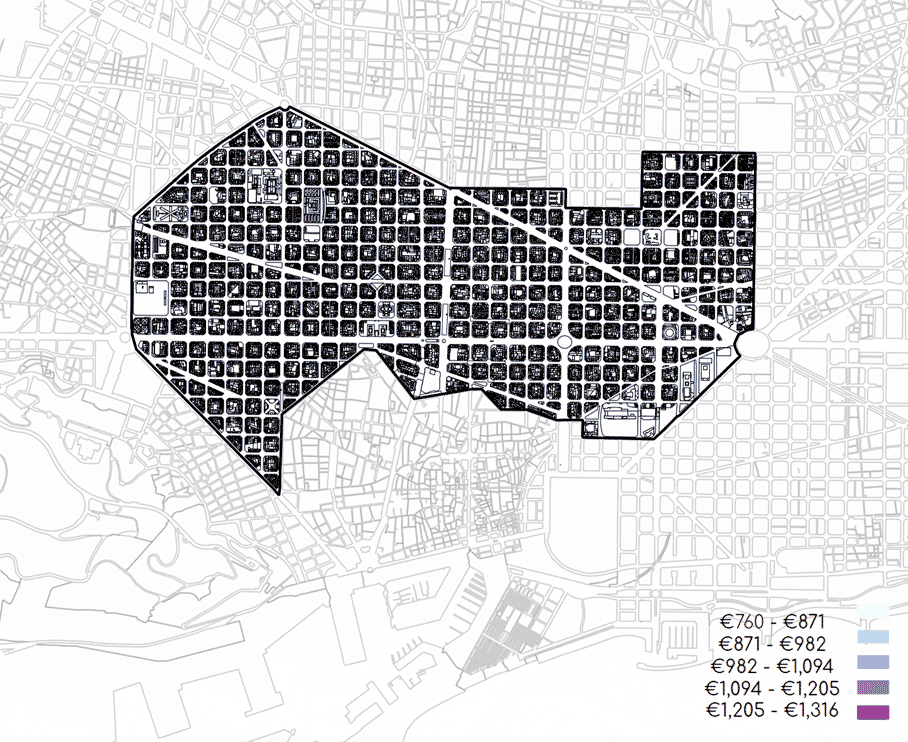
So, is that sustainable for an under 30?:
The current scenario of expenses rent will take more than a half of the income, redistributing bills in an unsustainable way, at least the users needs to save at least 10% of their incomes to be more sustainable with living – social life – services for that reason we compare it with the ideal scenario which is the second graph where the expense for rent does not exceed 40%.
Graph 1; Curren Scenario:

Graph 2; Ideal Scenario:

Move into a cheaper place:
In conclusion, by analyzing the data from fotocasa, an under 30 with his income has to move into a cheaper place to live, starting the process of gentrification as we know. this movement causes income – a market movement, so now is introducing new people into the districts and these new users with new necessities will start again a gentrification process over again, cycling that never ends into the city.
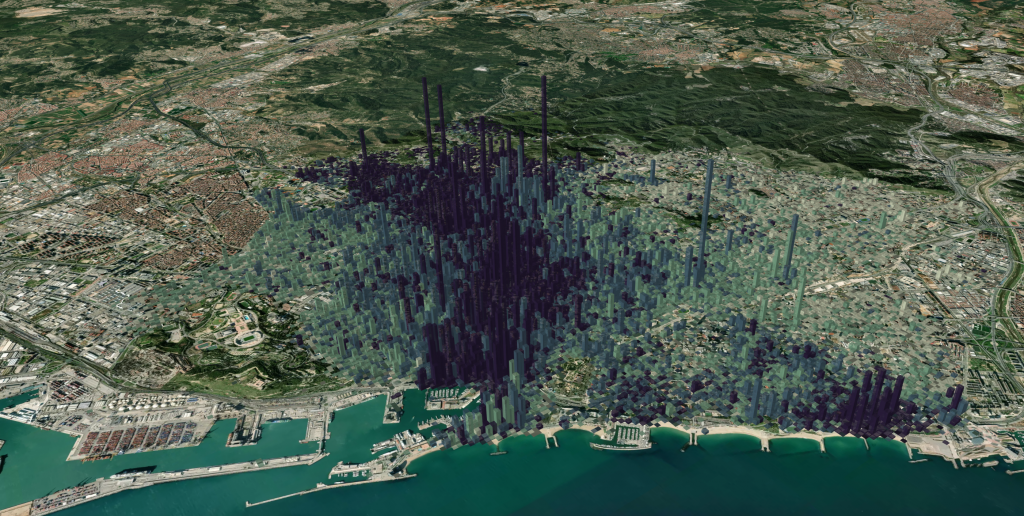
Gentrification – Real Estate is a project of IAAC, Institute of Advanced Architecture of Catalonia developed at Master in City and Technology in 2020/21 by students: Dongxuan Zhu, Miguel Angel Tinoco & Ivan Reyes, and faculty: Diego Pajarito